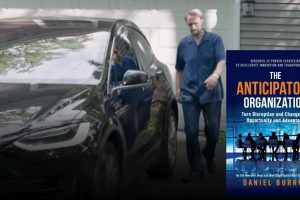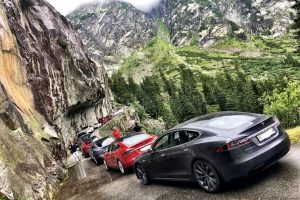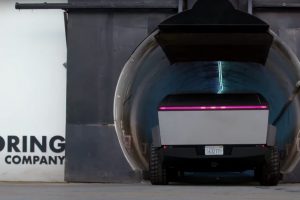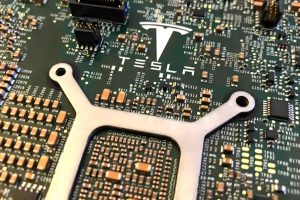This article is an expanded version of material that appears in Tesla: How Elon Musk and Company Made Electric Cars Cool, and Remade the Automotive and Energy Industries, Edition 4.1. This history of Tesla, written by Charged Senior Editor Charles Morris and originally published in 2014, has now been completely revised and expanded, with new chapters on Model Y, Cybertruck, the Chinese Gigafactory and the events of 2020.
David Havasi was a car guy from birth. He grew up near Auburn Hills, and his dad worked in the auto industry. “My childhood was steeped in Detroit auto culture,” he told me. “That’s what we talked about at the dinner table. My dad would bring home lab cars—like a library book, but it was a car. He worked on minivans, K-cars, a lot of projects that were revolutionary for their time, so I really got to appreciate innovation. His last project was the PT Cruiser, which basically invented the crossover segment.”
As did Tesla co-founders Marc Tarpenning, Martin Eberhard and Elon Musk, Havasi felt the conflict between his love of speed and his concern for the environment. “I loved performance cars like the Viper and the Stealth—I learned how to drive on those cars. For me having a car was not utilitarian, and still isn’t. It was recreational—every drive is recreational. But there was this inner conflict—usually the more fun a car was to drive, the worse it was for the environment. It was a dichotomy that I really struggled with.”
JOINING THE TEAM
Havasi started following the EV scene very early in the game. He was excited about AC Propulsion’s tzero, the vehicle that inspired the Tesla Roadster. He loved GM’s ill-fated EV1, and was heartbroken when the cars were removed from the market and crushed.
“I’d heard about Tesla, and I always thought the way I’d support them was by being a customer—if they build something, I will buy it. The straw that broke the camel’s back was the Deepwater Horizon oil spill. I was just outraged by it, the fact that we were running these crazy experiments with the environment, and the geopolitical games being played over petroleum. I thought, I can’t just be a consumer, I have to actively participate, to grab people and pull them into the fold.”
“In summer 2010, I started reaching out to Tesla. Tesla was really small at this point—about 1,000 people—so I started data-mining people who worked there (an elegant way of saying ‘cyberstalking’). I started looking for employees that I could contact.”
One of these was recruiter Rik Avalos. David sent him a Facebook message describing his background. “I never expected a reply, but he replied immediately, and said, can we talk?” After some back-and-forth, David flew out to Palo Alto and met with the Tesla team. This was in October 2010, before the launch of Model S. “They said, let’s keep in touch, because when we launch Model S, we’ll have to start [sales and delivery] programs from nothing.” Havasi stayed in touch with Avalos, and his persistence paid off in 2012, when he scored a job on Tesla’s delivery team (see below). At the time George Blankenship, who famously developed Tesla’s innovative sales and marketing operation, was in charge of sales and delivery. “I consider him a mentor. We really hit it off. They called him Uncle George.”
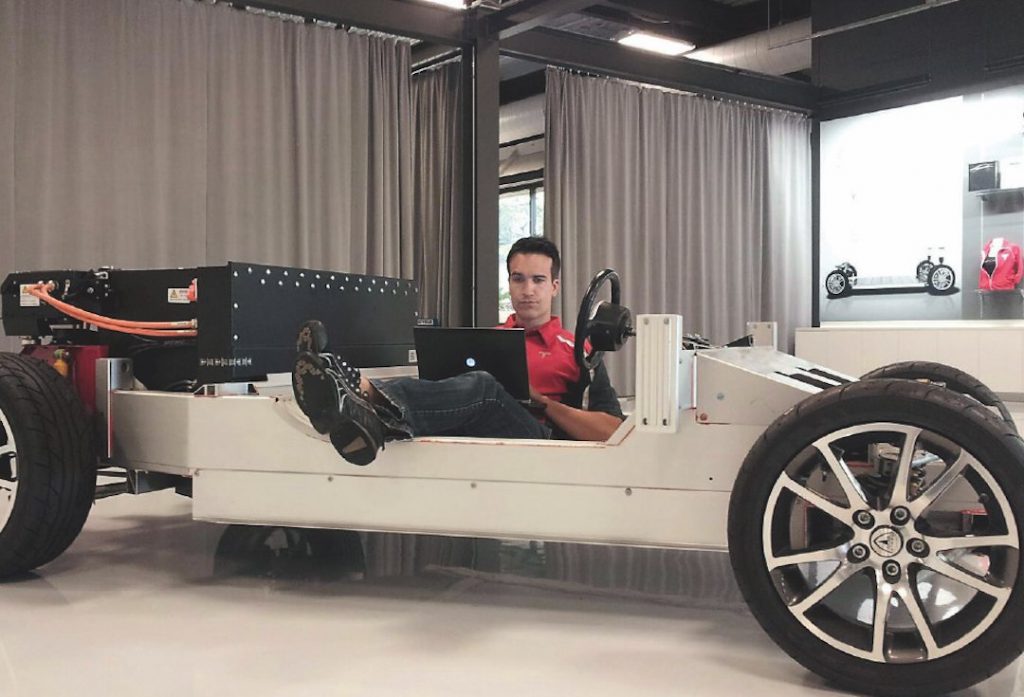
In 2013, Havasi joined Asset Lite, an expeditionary unit of Tesla’s sales team. To business gurus, an asset light model means that a business owns few capital assets relative to the value of its operations. This loosely describes Tesla’s marketing operations, which relied on the initiative of individuals, who were not furnished with offices or expense accounts. “The marketing department at the time was referred to as KASM, which stood for Kick Ass Sales and Marketing. It was basically, here’s an iPad and a car. Go get ‘em, tiger,” says Havasi. “Tesla in the early days was about ‘How much blood can you squeeze from a rock—how effective can one person be, if given a task?’”
SPREADING THE WORD
Havasi was sent to Florida to drum up sales, but also to spread the word, raise awareness and make converts for the company’s mission. He was following in the footsteps of a fellow named Will Nicholas, who became a legend at Tesla. “He used to drive a Roadster up and down the main drag in South Beach, offering people rides,” said Havasi. “He almost single-handedly created Tesla’s presence in Florida.” Nicholas finalized some of Tesla’s earliest sales sitting in a Roadster, imprinting a buyer’s credit card using one of those old-fashioned ka-chunk gadgets.
Havasi saw himself as one of the Johnny Appleseeds of Tesla, a small group of self-starters who fanned out around the country. “There were only a handful of us—for the Roadster, they had just the major markets, under a dozen. Same for Model S in the beginning. It was very much an open feedback loop—there was a general plan, but they were open to ideas. We partnered with Inside Sales out of Palo Alto—they acted as kind of a booking agent. They data-mined all the people who had expressed interest in Tesla on the web site, and they would start reaching out to those people, saying, ‘We now have test drive capability in your region, do you want to schedule a test drive?’”
Havasi decided to move to Sarasota (where he still lives) because of its central location on Florida’s West Coast. He used guerilla marketing techniques, such as parking his Model S in high-traffic areas, where it invariably attracted attention. The marina in newly-hip St Petersburg was a favorite spot, because there was a lot of foot traffic. “I called it ‘parking like a pimp.’ I’d pull the car up on the sidewalk, pop the frunk and sit in it like it was a hammock with my iPad [Havasi coined the term frammock to describe this application of the frunk]. I’d have the door open, and people would walk by and see the display, and they’d say ‘What?’ That was where I could start the conversation, and then I’d do a hot lap with them, serve the Kool-Aid and start planting that seed, and people that were in the market would say ‘I need to start looking into that.’”
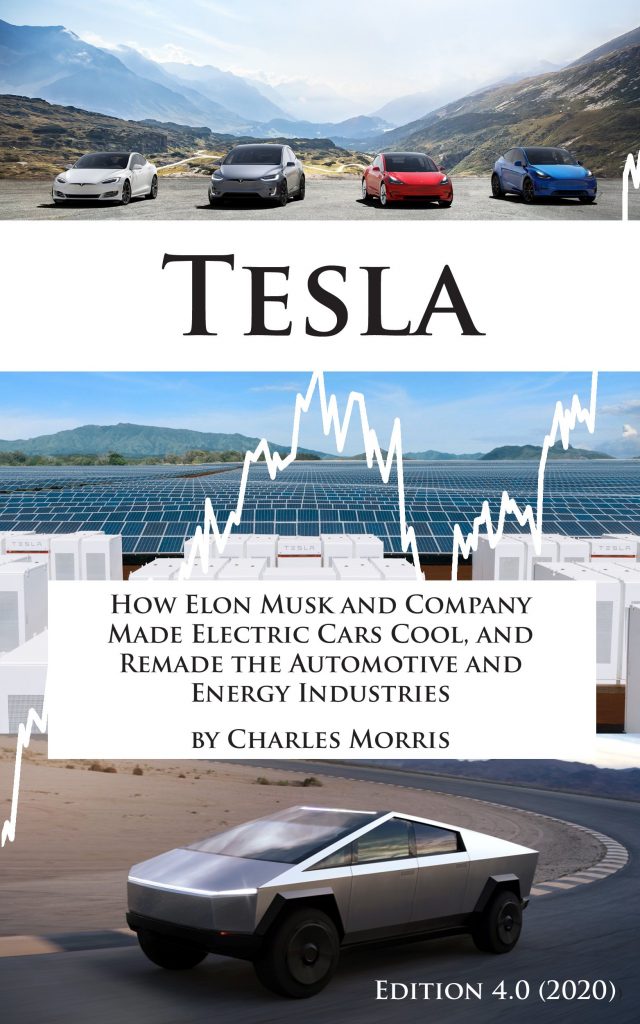
Downtown St Pete (coincidentally, the headquarters of Charged) had the perfect demographic for Tesla sales. People around the country were rediscovering the coolness of downtown areas, lots of new condo towers were going up, and the people moving into them were first-mover, early-adopter types. “It was a neat kind of convergence, where the market was ready for it, plus the city leadership was very progressive when it came to environmental initiatives, so whenever we did any kind of drive event, we had really good cooperation. It sold the city as being on the cutting edge.”
“We had to be really creative about how to stretch the dollars. We couldn’t spend a dime. It was very much guerilla tactics.” As more demo vehicles became available, Havasi and his team started doing test drive events at hotels. “We’d bring a few Model S to a hotel parking lot, and Inside Sales would book people. We had one person in the lobby with a laptop configuring cars. That was really the core strategy of the marketing campaign.”
“Auto companies spend millions and millions of dollars on these very artsy, vague commercials and billboards, but the most valuable thing you can do with a Tesla is to get a butt in the seat. You get ‘em in the seat, you have ‘em hit the accelerator—I call the accelerator the believer, because once you hit it you become a believer. You could be the most staunch critic, but when you hit the accelerator, it’s an IV of Kool-Aid. You’re done. The spell is cast. I was a big advocate [of the Asset Lite approach]. Keep it light and tight. Give me a Tesla flag, a car and an iPad. That’s all we needed. The car is the star. You have them drive the car, and you address objections. ‘Doesn’t the battery die in a year? No. How do you take a road trip? Superchargers.’ Then you see the light bulb go off.”
Havasi had a long run at Tesla, and did many different things. “I’d fly to different parts of the country and help out with product launches, marketing events, delivery support—you name it.” 2018 and early 2019, when Model 3 hit the streets, was a wild time—it was Production Hell at the factory, and Delivery Hell in the field. For the Canadian Model 3 launch, Havasi’s team took over the Convention Center in Toronto, and delivered 1,800 cars in 2 weeks. Havasi did a 20-minute orientation talk on a loop for 12 hours every day. “New owners could listen to my guided tour of the car, and if they needed to hear it again, they could just stay another 20 minutes. We used to give big hour-long orientations with Model S, but we did not have that luxury with Model 3.”
CELEBRATING THE FUTURE
Havasi learned much from the George Blankenship school of marketing. “He didn’t want us to sell it, he wanted us to celebrate it. I call it applying the superlative approach. You find out what the person values, then you show them how the Tesla meets that value proposition in a way that no other product could ever possibly meet it. They value efficiency? This thing’s double the efficiency of the Toyota Prius. They value performance? It’s the quickest production vehicle ever made. They value safety? Lowest probability of occupant injury ever. Storage? Almost double the storage of other cars in its class. On and on and on.” Once Havasi learned which metrics a particular buyer used to value a great car, he would explain the absurdity of buying anything else. “You want a car that’s slower? Louder? Less efficient? Less storage? Harder to maintain?”
“Then that brings out the objections. Knowing that it’s the superlative in all these things, what is holding this person back? And I knew that the only thing that holds people back from a Tesla is a misperception. Most of the objections are based on misinformation. They’re easy to eliminate, because they’re not based on fact. I’ve heard them all. I lived, ate and breathed this stuff for seven years. I could write a book just on the objections, and how to counter them.”
“I encouraged them to test-drive other cars on the same day. One woman test-drove an Audi A7, and the salesman found out she was going to drive a Tesla. This was in 2014. He said, the company’s going bankrupt. They’re going to be done in a month. And also, Teslas break down in the rain. When it rains, they stop working.” It was a typical summer afternoon in Florida, which meant there was a torrential rainstorm just as the lady arrived to test-drive the Model S. So much for that objection—she ordered a Model S.
Back in the early days, nothing at Tesla seemed to be set in stone, and things could change from one day to the next. “There needed to be an asterisk after every Tesla protocol e-mail. They’d say, ‘This is the way it’s going to be,’ and there should be an asterisk that says, ‘*for now.’ It could change eight times in one year. There were always these big internal debates about how things should be run.”
“One debate for a long time was about ‘effective cost of ownership.’ Elon was a big advocate of [publicizing the] effective cost of ownership—the overall operational cost of the product over time, which is a very abstract way of thinking about ownership of a product. But most people are brass tacks, bottom dollar, what am I paying right now. In the stores, when we’d have on the touchscreens how much the cars cost, they were factoring in EV tax credits, gas savings, all these things, and it showed that price.”
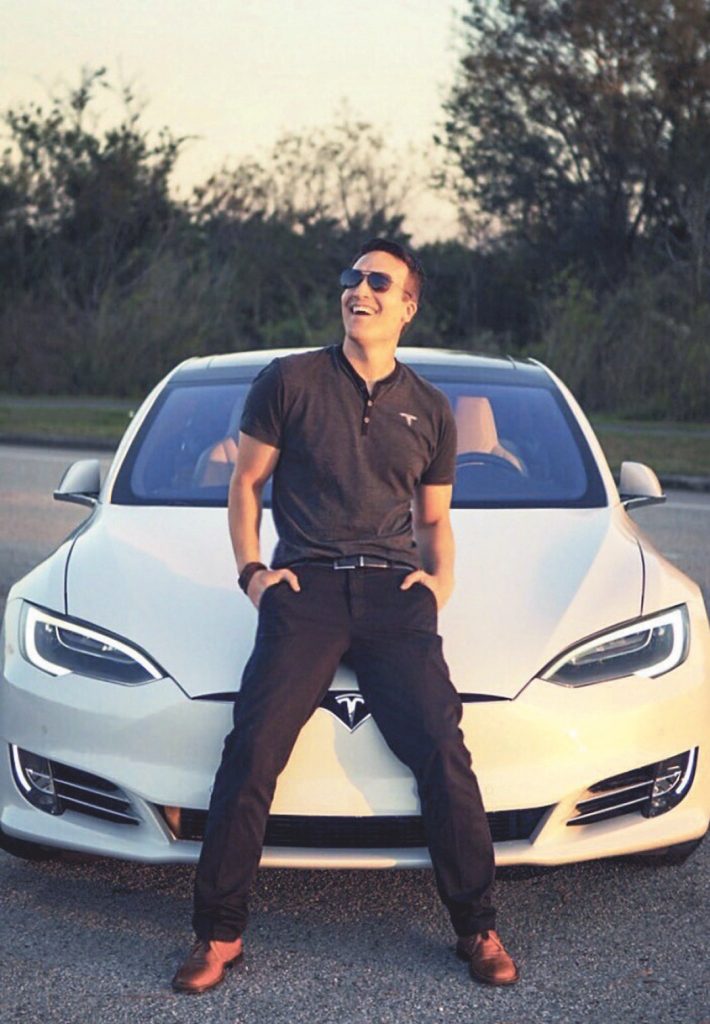
For a while, this got a bit ridiculous—the prices quoted on the web site were factoring in things like the time saved by not going to gas stations—at $100 per hour! People started talking about the silliness of this in the media and on online forums, and Tesla eliminated the dubious calculations. Today, when you price a car on the web site, you have the option of seeing the actual purchase price, or the price “including potential savings,” which at this point includes only savings on gas, as the federal tax credit is no longer available.
“It was a huge battle, and just in the latter years finally there was some give. We would scream from the field. We were saying, ‘This doesn’t have value. It’s a bait-and-switch.’” Of course, this sort of disingenuous marketing blarp is standard fare in the auto industry, but it seemed out of character for Tesla, which customers like to believe eschews the more unpopular practices of other automakers.
“What they finally did was the best solution. Now, if you go on the web site, you can toggle [between] ‘effective cost of ownership’ and what it actually costs.”
The years of person-to-person sales gave Havasi a lot of insight into how potential buyers think, and allowed him to develop a very streamlined and predictable “customer journey.” He later applied this expertise to the company’s web site. “For every person that walks into a Tesla store, there are 10,000 who will never walk into a store, that only experience Tesla through the web site, so we have to take that secret sauce that we have in our best stores, the stores that are applying the superlative approach, and have people go through that customer journey on the web site, and come to those same conclusions.”
MOVING ON TO THE NEXT CHAPTER
Havasi left Tesla in July of 2019, when a friend offered him an opportunity to join a medical tech company that was in the process of commercializing a new product. It was an amicable split, and Havasi remains an enthusiastic supporter of Tesla. “I loved working at Tesla. I liked being out in the field, improvising and creating something out of nothing. It wasn’t easy, and many times it was not fun—there were some very, very difficult situations, but it was the thrill of finding a way out, of finding a solution, that was appealing.”
As the company grew from a feisty startup into a major automaker, the freewheeling, let’s-put-on-a-show atmosphere inevitably dissipated. “The real innovations started happening at headquarters, more than in the field. The role of Tesla employees in the field transferred from innovation to administration. There was still an open feedback loop, but it became very administrative, which is not my forte. I was accustomed to being out in the field and improvising, and the role became being behind a desk with a headset on, talking with banks, in a back office with no windows. Weeks would go by without driving a Tesla. I wasn’t doing what I joined Tesla to do, which was to serve the Kool-Aid.”
Havasi also wanted to stay in Sarasota, which limited the jobs available. He spent just a few months at the medical firm before deciding that he wanted to devote more time to spreading the word about EVs. One day he met CleanTechnica Director Zachary Shahan by chance at a Supercharger station, and he is now writing articles and doing a podcast called Tesla Inside Out for CleanTechnica.
DIY DELIVERIES
Whenever I talk to a former Tesla employee, I always ask for anecdotes from the early days (in a rock star’s biography, they’d be called “road stories”). David Havasi, who worked for Tesla from 2012 to 2019 in various delivery and marketing roles, called the Tesla story “a combination of thousands of heroic feats that no one knows about.”
One of these edifying episodes occurred during Havasi’s first year at Tesla, when he worked with delivery chief Neil Joseph to develop the company’s delivery program. The team came from “all walks of life. We had Alpine skiers, former military, broadcast journalists, oil commodity traders, a guy who was in the pit crew of a race team…”
“I remember in a huddle at Fremont, Neil said, ‘What’s really great is there are no rules—we can make it whatever we want it to be, it’s a clean slate. The good news is, no one’s ever done this before. The bad news is, no one’s ever done this before.’” Havasi told me a great story that illustrates this get-it-done-yourself attitude. During the summer of 2012, Tesla ordered a fleet of Ford F-250 Super-Duty pickup trucks and 22-foot aluminum trailers, to be used for delivering Model S to customers. Manufacturer Featherlite shipped the trailers from Ohio to Fremont, but Havasi’s team hadn’t quite grasped that, like Ikea furniture, the trailers came in pieces, and had to be assembled.
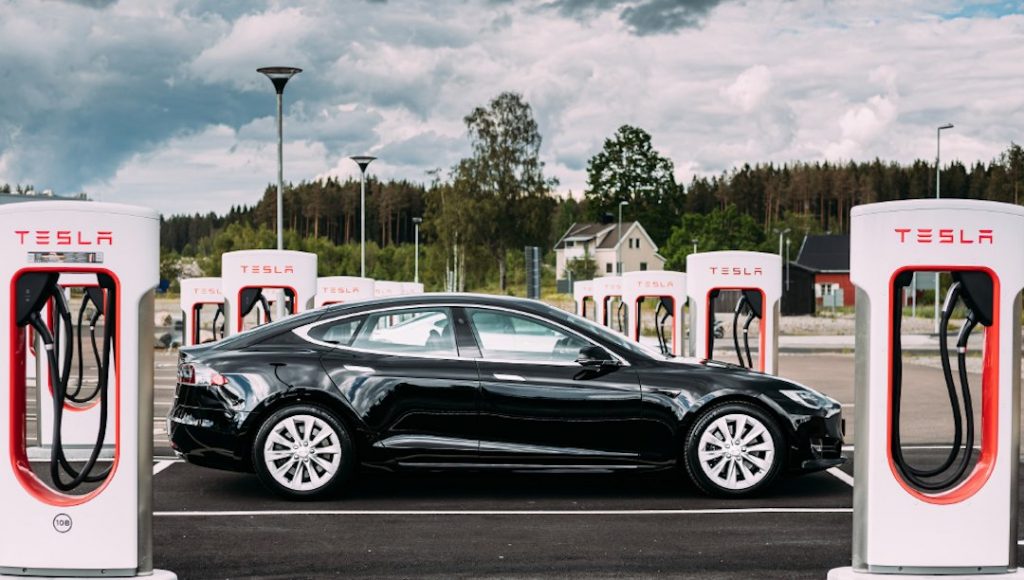
“Fremont was a trip back then,” said Havasi. “Now they’ve packed it to capacity, and there’s no parking—they have to shuttle employees from off site. At the Fremont I remember, you could pull right up to the door. Only a sliver of the factory was being used at that point. 90 percent was vacant—it looked post-apocalyptic, with [motionless] robots and massive areas that looked like a convention center between shows. There were several football fields of parking lots, almost all vacant.”
“So, we were in this back lot at Fremont, this big truck shows up with the trailers, and they’re stacked on the back of the truck like pallets. We said, ‘Cool, let’s get ‘em off of here and we’ll hook ‘em up to the trucks.’ And the truck driver said, ‘What do you mean?’”
The Tesla team hadn’t realized they were expected to unload the trailers themselves. “Luckily two out of the 12 guys on our team were licensed forklift drivers. Now we needed forklifts. This is a factory, there’s got to be forklifts somewhere. Probably the receiving end of the factory. So, let’s go to the other side of the factory, and see if we can Bogart some forklifts. At Fremont, you ride bicycles from one side to the other—it’s this huge building. So, me and this other gentleman hop on two bikes and we’re riding through the factory. That was the first time I saw Elon—he was sitting on a folding chair on the factory floor.”
“The thing is, one forklift couldn’t take one trailer off the truck, it was too long. What we had to do was—it was like synchronized swimming—we had to synchronize the forks of two forklifts, move them in under the trailer, lift them simultaneously, then move together and lower them down, and then repeat several times—it was this real nail-biting thing—don’t drop ‘em!”
They did manage to unload the trailers without mishap, but now they had to assemble them. The team didn’t have any tools, so they sent a couple of guys to the nearest Home Depot to buy a grocery cart full of screwdrivers and wrenches. “We were calling back and forth and saying, ‘Hey, take a picture of that bolt and text it,’ so we knew what kind of tools to get.”
“We assigned three guys to each trailer, and from 9 am to 9 pm in the back lot at Fremont, we installed the brake lights, the winch systems, the wheel hubs, the air dams, the hitch housings. Early the next morning we had to make a seven-hour run from Fremont to the Costa Mesa service center to deliver a truck and trailer and a couple of customer cars—the first cars to be delivered out of Costa Mesa.”
By the time they built the trailers, and loaded up the cars, which had just rolled off the assembly line, it was pitch-black outside. “We were using our cell phones as flashlights to tighten the last bolts on the trailers and do final inspection of the cars—we didn’t think to buy flashlights. It was 11 at night and the factory was still bustling. Not with assembly people on shifts. No, these people had been there since that morning, and that was the normal thing.”
“We needed to strap the Model Ss onto the trailers that we had just built, and we came to the conclusion that we didn’t have enough straps to do it, and everything was closed. I’m pretty sure we bought every store in the area out of lockdown straps anyway.” The guys distributed what straps they had as strategically as possible. “We put them on the front driver-side tires. We had chains and cords and lanyard clips—some bungee cords were in there too, even knowing that that was completely futile to stop a five-thousand-pound car bouncing off the back of the truck.”
“We needed somebody to sign off on it, so we got a guy called Yost, who was the head of manufacturing at that time. He was about to head home, but he said he’d pull around and take a look at it. So, it’s pitch-black, and Yost pulls up in a white Performance Model S. He rolls down the window, peeks out and says, ‘This is very dangerous,’ then zips out into the night.”
Havasi and his team had a laugh at the absurdity of the situation, then spent some more time tightening things down before they set out. In an apt metaphor for Tesla’s many unlikely successes, they made it to Costa Mesa without losing any cars.
BONUS: PODCAST INTERVIEW
===
This article, which originally appeared in Charged, is an expanded version of material that appears in Tesla: How Elon Musk and Company Made Electric Cars Cool, and Remade the Automotive and Energy Industries, Edition 4.1. This history of Tesla, written by Charged Senior Editor Charles Morris and originally published in 2014, has now been completely revised and expanded, with new chapters on Model Y, Cybertruck, the Chinese Gigafactory and the events of 2020. Photos courtesy of Charged and David Havasi. Bonus podcast interview between CleanTechnica’s Zachary Shahan and David Havasi via CleanTechnica.


